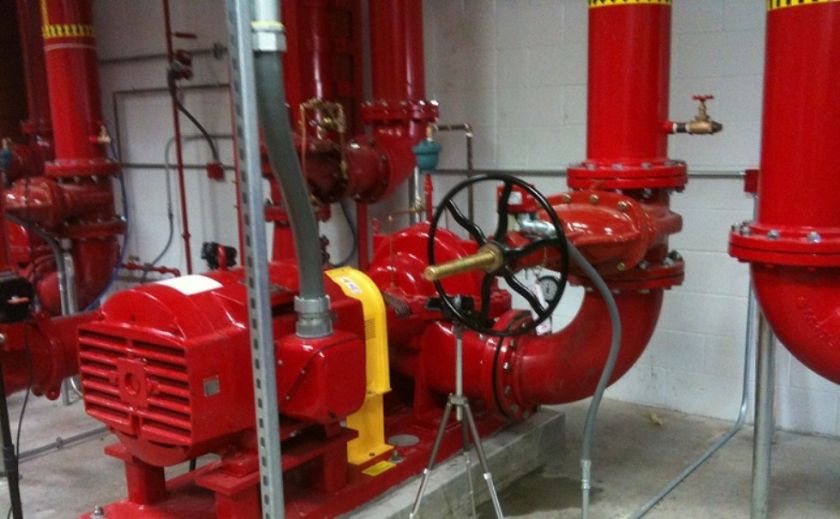A fire fighting pump is needed when the sprinkler system’s hydraulic design requires a higher terminal pressure than the water source can provide. It can be a centrifugal, turbine or positive displacement style pump.
When choosing a fire fighting pump, it is important to consider PSI and GPM. Both of these factors affect the force that the water has when it is discharged from the pump and hose.
Defend Your Home
A fire fighting pump helps to defend your home and keep you safe during bushfire season by letting you use your pool or water tank to fight back against a blaze. This is a crucial safety system to own, especially for homes located in an area prone to wildfires.
The fire fighting pump is the heart of any hydrant-based fire protection system. It is the system that drives all other components, including sprinklers and hose standpipes. A fire pump that isn’t functioning properly can render your whole fire protection system useless, which means a loss of protection for your property and family.
When choosing a fire fighting pump, look for one that is UL listed and FM approved. This ensures that the equipment meets strict safety standards. In addition, you want to find a model with a high-quality engine that is reliable and has low maintenance needs.
Typically, fire pumps are either electric or diesel powered. The difference is that diesel fire fighting pumps offer a backup power source in case the electricity fails during a fire. They also require more regular inspections, such as checks of the batteries, oil level and hoses.
Another key consideration is the size of your fire pump. Some models are large and take up a lot of floor space, while others are small and portable. If you need a small model, consider a PAH pump from Danfoss, which is designed for high-pressure water mist systems and provides a maximum flow rate of 187 l/min (49.4 gpm).
Protect Your Property
A fire fighting pump is an important part of a water-based fire protection system. Fire pumps are used to increase the pressure (measured in psi or bar) of an existing water supply to help prevent or extinguish a fire.
Choosing the correct size fire fighting pump can be challenging. Too much and it will waste resources, too little and the results could be catastrophic. The key is to find the “goldilocks” solution; one that is just right and will deliver both the liquid flow capacity and the pressure required in a timely manner.
To determine the size fire pump required, a building hazard analysis needs to be performed. The analysis will identify the maximum demand of the system, and it can be based on either the number of standpipes or on the water pressure required by NFPA 14: Standard for the Installation of Standpipe and Hose Systems.
When shopping for a fire fighting pump, look for one that is made from sturdy metal components and has a self-priming capability. These characteristics ensure that the pump will be ready to use in the event of an emergency. Also consider whether you want an electric or diesel fire fighting pump, as they operate differently and require different maintenance protocols.
Fight Fires on the Farm
If you own a farm or operate a business with buildings and livestock that are at risk of fire, a fire fighting pump can help. These high-powered water pumps can increase the water pressure in your fire protection systems to help fight a fire quickly. They can also be used to drench buildings in advance of a bushfire, or to hose down plants and trees to prevent them from spreading.
Fire fighting pumps can also be useful for irrigating your crops and fields or washing down machinery during drought conditions. They can help you save on power and water costs. They’re also great for rehydrating livestock and rehydrating pastures, particularly if there’s been a lot of dry heat.
A fire fighting pump can also be useful for rehydrating soils and restoring damaged landscapes after wildfires have passed. This can help reduce erosion and improve your crops’ ability to withstand future bushfires. However, it’s important to note that if you use your fire fighting pump for this purpose too soon after a wildfire, the moisture may cause soil pH shock and negatively impact future crops.
When choosing a fire fighting pump, look for one with sturdy metal componentry and a quality engine. These world-leading engines, like those offered by Honda and Yamaha in petrol and Cromtech and Water Master in diesel, are backed by extensive national service networks to keep you up and running when you need them most.
Save Money
Fire water pumps are a key component in most water-based fire protection systems. These are particularly necessary in high-rise buildings where the water pressure from the main line is not great enough to power systems like sprinklers and foam systems.
While a fire fighting pump is not used often, it’s an important tool to have for when needed. A fire can quickly turn from a minor hazard to a full-on blaze without the proper water supply, which is why installing fire fighting pumps in a building is vital.
The most important thing to keep in mind when choosing a fire pump is its PSI and GPM ratings. These numbers determine how much force the pump can put out and how many gallons it can move in one minute. The higher the GPM rating, the more water can be moved at a time.
Another consideration for selecting a fire pump is its sizing. When a fire pump is sized incorrectly, it can lead to overpaying for the equipment and not having enough pressure in case of an emergency. There are a number of different ways to calculate the correct size for a fire water pump, including using the 1% rule and the pressure-loss rule. For more information about sizing fire pumps, consult with an experienced fire safety professional.
